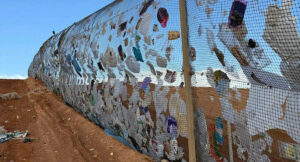
New research unveiled at the American Heart Association’s Scientific Sessions 2025 in New Orleans suggests that a simplified, one-month clot-preventing medication regimen following stent placement in adults with atrial fibrillation (AFib) is as safe and effective as the traditional year-long treatment. This finding could significantly impact clinical practices and patient outcomes worldwide.
The study, known as the OPTIMA-AF trial, was conducted by a team led by Dr. Yohei Sotomi, M.D., Ph.D., from the University of Osaka Graduate School of Medicine. It challenges the standard protocol of prescribing two clot-preventing medications for a year after stent implantation, a regimen that, although effective, increases the risk of serious bleeding.
Understanding the Study and Its Implications
The trial focused on adults with AFib, a prevalent heart rhythm disorder, who had undergone stent placement to enhance blood flow. Traditionally, patients are prescribed a direct oral anticoagulant, like dabigatran or rivaroxaban, alongside a P2Y12 inhibitor, such as clopidogrel, for a year. However, the study explored the efficacy and safety of reducing this dual therapy to just one month.
“Previous studies confirmed that using two anti-clotting agents instead of three reduced bleeding,” explained Dr. Sotomi. “However, no study has tested whether the duration of dual therapy could be safely shortened to just one month. Our study is the first to show that a one-month strategy is both safe and effective, offering real-world benefits for patients and doctors.”
Key Findings from the OPTIMA-AF Trial
The study involved over 1,000 Japanese adults with AFib who received a stent. Participants were divided into two groups: one received both medications for one month, followed by only the anticoagulant for the remaining 11 months, while the other group continued dual therapy for the entire year.
5.4% of participants in the one-month group and 4.5% in the 12-month group experienced a heart attack, stroke, or death, suggesting the shorter approach was equally effective.
Participants in the one-month dual-treatment group had significantly fewer bleeding complications: 4.8% versus 9.5% in the 12-month group.
Most bleeding reductions were due to less serious bleeds requiring medical attention, which can affect quality of life and increase healthcare costs.
Expert Opinions and Broader Context
The announcement comes as a potential breakthrough in managing AFib patients post-stent placement. Dr. Sotomi emphasized that reducing the duration of dual therapy could lower bleeding risks without increasing the likelihood of stroke or heart attack. “These results may help doctors feel more confident in prescribing shorter durations of dual antithrombotic therapy after stenting among some patients with AFib,” he noted.
AFib affects up to 1 in 10 stent recipients and significantly increases the risk of stroke. According to the American Heart Association, approximately 5 million adults in the U.S. have AFib, with projections indicating that over 12 million will be affected by 2030.
Limitations and Future Directions
While the study’s findings are promising, they are primarily based on a Japanese cohort, which may limit their applicability to other populations. Additionally, the study predominantly involved patients with stable heart disease, and only about 20% of participants were women, suggesting a need for further research to confirm these results in more diverse groups.
The move represents a significant shift in how AFib patients could be treated post-stent placement, potentially reducing healthcare costs and improving patient quality of life. As the medical community absorbs these findings, further studies and clinical trials will be essential to validate the results across different demographics and healthcare systems.
Meanwhile, the American Heart Association continues to champion research and innovation in cardiovascular science, underscoring the importance of evidence-based practices in improving patient outcomes globally.





